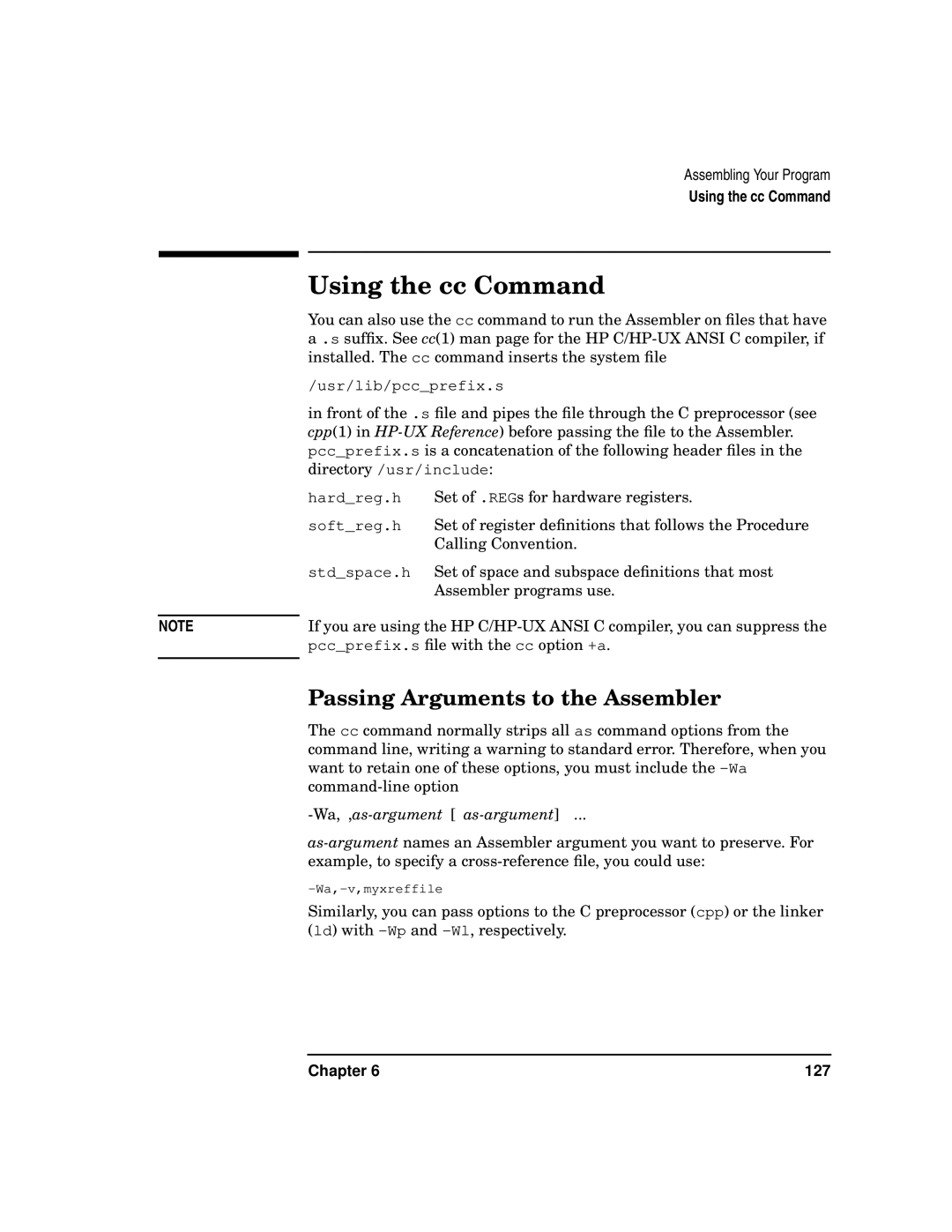
NOTE
Assembling Your Program
Using the cc Command
Using the cc Command
You can also use the cc command to run the Assembler on files that have a .s suffix. See cc(1) man page for the HP
/usr/lib/pcc_prefix.s
in front of the .s file and pipes the file through the C preprocessor (see cpp(1) in
hard_reg.h Set of .REGs for hardware registers.
soft_reg.h Set of register definitions that follows the Procedure Calling Convention.
std_space.h Set of space and subspace definitions that most Assembler programs use.
If you are using the HP
Passing Arguments to the Assembler
The cc command normally strips all as command options from the command line, writing a warning to standard error. Therefore, when you want to retain one of these options, you must include the
-Wa, ,as-argument [ as-argument] ...
Similarly, you can pass options to the C preprocessor (cpp) or the linker (ld) with
Chapter 6 | 127 |
